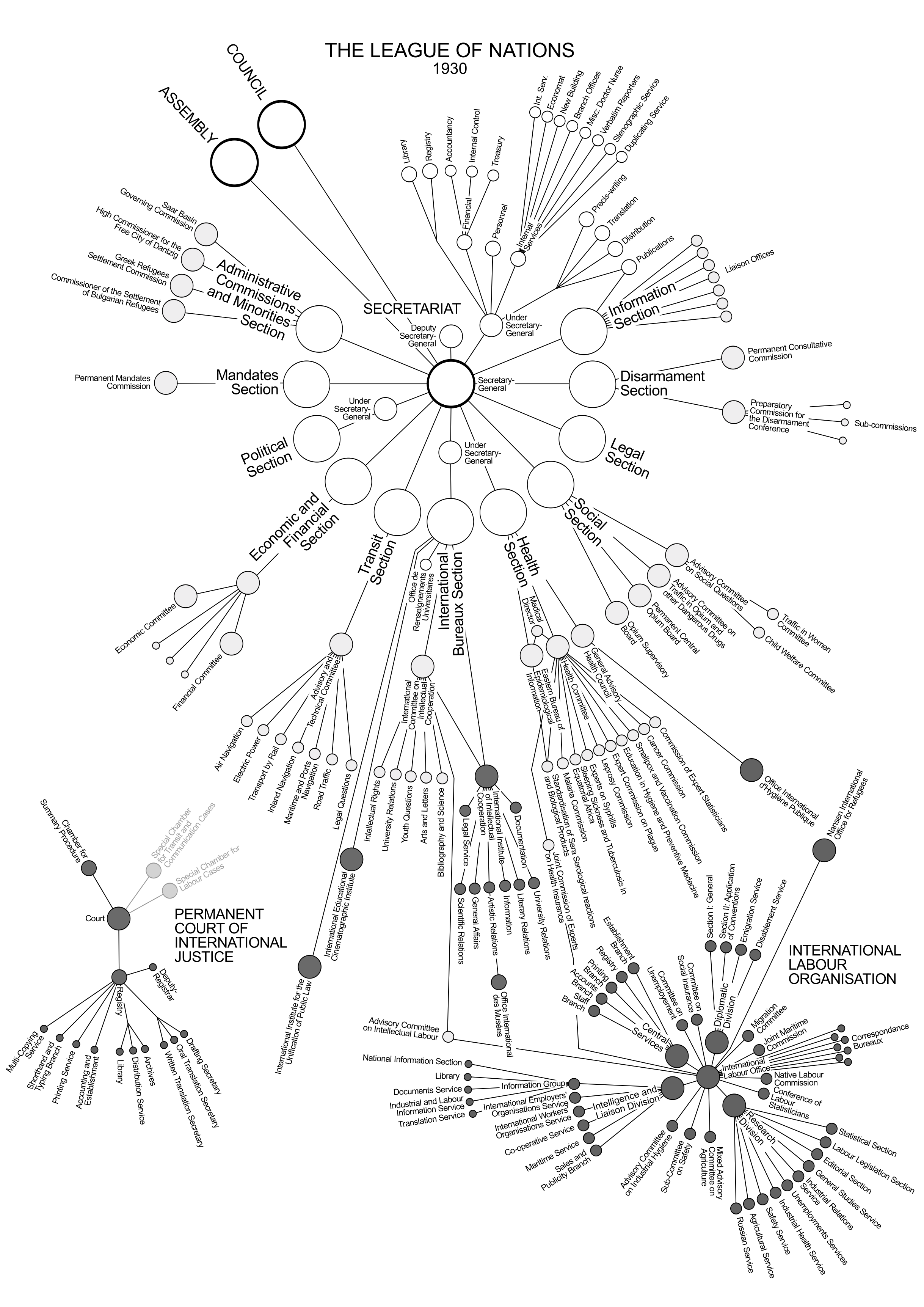|
Delegation
Delegation is the process of distributing and entrusting work to another person.Schermerhorn, J., Davidson, P., Poole, D., Woods, P., Simon, A., & McBarron, E. (2017). ''Management'' (6th ed., pp. 282–286). Brisbane: John Wiley & Sons Australia. In management or leadership within an organisation, it involves a manager aiming to efficiently distribute work, decision-making and responsibility to subordinate workers in an organization. Delegation may result in creation of an accountable chain of authority where authority and responsibility moves down in an organisational structure. Inefficient delegation may lead to micromanagement. There are a number of reasons someone may decide to delegate. These include: * To free themselves up to do other tasks in the pace of their own * To have the most qualified person making the decisions * To seek another qualified person's perspective on an issue * To develop someone else's ability to handle the additional assignments judiciously and ... [...More Info...] [...Related Items...] OR: [Wikipedia] [Google] [Baidu] |
Accountability
In ethics and governance, accountability is equated with answerability, culpability, liability, and the expectation of account-giving. As in an aspect of governance, it has been central to discussions related to problems in the public sector, nonprofit, private (corporate), and individual contexts. In leadership roles, accountability is the acknowledgment of and assumption of responsibility for actions, products, decisions, and policies such as administration, governance, and implementation, including the obligation to report, justify, and be answerable for resulting consequences. In governance, accountability has expanded beyond the basic definition of "being called to account for one's actions". It is frequently described as an account-giving relationship between individuals, e.g. "A is accountable to B when A is obliged to inform B about A's (past or future) actions and decisions, to justify them, and to suffer punishment in the case of eventual misconduct." Accountabi ... [...More Info...] [...Related Items...] OR: [Wikipedia] [Google] [Baidu] |
Management
Management (or managing) is the administration of organizations, whether businesses, nonprofit organizations, or a Government agency, government bodies through business administration, Nonprofit studies, nonprofit management, or the political science sub-field of public administration respectively. It is the process of managing the resources of businesses, governments, and other organizations. Larger organizations generally have three Hierarchy, hierarchical levels of managers, organized in a pyramid structure: * Senior management roles include the board of directors and a chief executive officer (CEO) or a President (corporate title), president of an organization. They set the strategic goals and policy of the organization and make decisions on how the overall organization will operate. Senior managers are generally executive-level professionals who provide direction to middle management. Compare governance. * Middle management roles include branch managers, regional managers, ... [...More Info...] [...Related Items...] OR: [Wikipedia] [Google] [Baidu] |
Ambiguity
Ambiguity is the type of meaning (linguistics), meaning in which a phrase, statement, or resolution is not explicitly defined, making for several interpretations; others describe it as a concept or statement that has no real reference. A common aspect of ambiguity is uncertainty. It is thus an Attribute grammar, attribute of any idea or statement whose intention, intended meaning cannot be definitively resolved, according to a rule or process with a finite number of steps. (The prefix ''wikt:ambi-#Prefix, ambi-'' reflects the idea of "2 (number), two", as in "two meanings"). The concept of ambiguity is generally contrasted with vagueness. In ambiguity, specific and distinct interpretations are permitted (although some may not be immediately obvious), whereas with vague information it is difficult to form any interpretation at the desired level of specificity. Linguistic forms Lexical ambiguity is contrasted with semantic ambiguity. The former represents a choice between a ... [...More Info...] [...Related Items...] OR: [Wikipedia] [Google] [Baidu] |
Middle Management
Middle management is the intermediate management level of a hierarchical organization that is subordinate to the executive management and responsible for "team leading" line managers and/or "specialist" line managers. Middle management is indirectly (through line management) responsible for junior staff performance and productivity. Unlike line management, middle management is considered to be a senior (or semi-executive) position as middle managers are authorised to speak and act on behalf of the organisation to line managers, junior staff and customers. Included in this level of management are division, plant and department managers. American business historian Alfred D. Chandler Jr. argued in '' The Visible Hand'' (1977) that in the nineteenth century, Adam Smith's ''invisible'' hand was supplanted by the "''visible'' hand" of middle management, which became "the most powerful institution in the American economy". He credited middle managers with a central importance lik ... [...More Info...] [...Related Items...] OR: [Wikipedia] [Google] [Baidu] |
Positive Reinforcement
Positive is a property of positivity and may refer to: Mathematics and science * Positive formula, a logical formula not containing negation * Positive number, a number that is greater than 0 * Plus sign, the sign "+" used to indicate a positive number * Positive operator, a type of linear operator in mathematics * Positive result, a result that has been found significant in statistical hypothesis testing * Positive test, a diagnostic test result that indicates some parameter being evaluated was present * Positive charge, one of the two types of electrical charge * Positive (electrical polarity), in electrical circuits * Positive lens, in optics * Positive (photography), a positive image, in which the color and luminance correlates directly with that in the depicted scene * Positive sense, said of an RNA sequence that codes for a protein Philosophy and humanities * Affirmative (policy debate), the team which affirms the resolution * Negative and positive rights, co ... [...More Info...] [...Related Items...] OR: [Wikipedia] [Google] [Baidu] |
Unity Of Command
In military organisation, unity of command is the principle that subordinate members of a structure should all be responsible to a single commander. United States The military of the United States considers unity of command as one of the twelve principles of joint operations: Military problems When the principle of unity of command is violated problems quickly develop. An example occurred in Afghanistan in 2006 when Combined Forces Command-Afghanistan passed control of the ground fight to the International Security Assistance Force. This caused the operations to split between several unified commanders in charge of U.S. Central Command, the North Atlantic Treaty Organization, and the U.S. Special Operations Command, which caused significant operational problems. See also * Chain of command, a clear command structure * Civilian control of the military * Command hierarchy * Division of labor * Parochialism * Span of control * Staff (military) A military staff or g ... [...More Info...] [...Related Items...] OR: [Wikipedia] [Google] [Baidu] |
Employee
Employment is a relationship between two party (law), parties Regulation, regulating the provision of paid Labour (human activity), labour services. Usually based on a employment contract, contract, one party, the employer, which might be a corporation, a not-for-profit organization, a co-operative, or any other entity, pays the other, the employee, in return for carrying out assigned work. Employees work in return for wage, wages, which can be paid on the basis of an hourly rate, by piecework or an annual salary, depending on the type of work an employee does, the prevailing conditions of the sector and the bargaining power between the parties. Employees in some sectors may receive gratuity, gratuities, bonus payments or employee stock option, stock options. In some types of employment, employees may receive benefits in addition to payment. Benefits may include health insurance, housing, and disability insurance. Employment is typically governed by Labour law, employment laws, o ... [...More Info...] [...Related Items...] OR: [Wikipedia] [Google] [Baidu] |
National Institute Of Education
The National Institute of Education (NIE) is an autonomous institute of Nanyang Technological University (NTU) in Singapore. Ranked 10th in the world and 2nd in Asia by the QS World University Rankings in the subject of Education and Training in 2024, the institute is the sole teacher education institute for teachers in Singapore. NIE provides all levels of teacher education, ranging from initial teacher preparation, to graduate and in-service programmes, and courses for serving teachers, department heads, vice-principals and principals. Its enrolment stands at more than 5,600 full-time equivalent students. The institute was first established as the Teachers' Training College in 1950. Programmes NIE is organised into Programme Offices with 10 supporting Academic Groups. The Office of Teacher Education administers the initial teacher preparation programmes, leading to diploma, degree and postgraduate diploma qualifications, to equip student teachers with the knowledge to lea ... [...More Info...] [...Related Items...] OR: [Wikipedia] [Google] [Baidu] |
Organizational Structure
An organizational structure defines how activities such as task allocation, coordination, and supervision are directed toward the achievement of organizational aims. Organizational structure affects organizational action and provides the foundation on which standard operating procedures and routines rest. It determines which individuals get to participate in which decision-making processes, and thus to what extent their views shape the organization's actions.Jacobides., M. G. (2007). The inherent limits of organizational structure and the unfulfilled role of hierarchy: Lessons from a near-war. Organization Science, 18, 3, 455–477. Organizational structure can also be considered as the viewing glass or perspective through which individuals see their organization and its environment. Organizations are a variant of clustered entities. An organization can be structured in many different ways, depending on its objectives. The structure of an organization will determine the mode ... [...More Info...] [...Related Items...] OR: [Wikipedia] [Google] [Baidu] |
Micromanagement
Micromanagement is a management style characterized by behaviors such as an excessive focus on observing and controlling subordinates and an obsession with details. Micromanagement generally has a negative connotation, suggesting a lack of freedom and trust in the workplace,Chambers, Harry (2004)''My Way or the Highway'' Berrett Koehler Publishers, San Francisco. Retrieved on 20 June 2008. and an excessive focus on details"Micromanage" via ''Merriam-Webster's Online Dictionary''. at the expense of the "big picture" and larger goals. Definition 's online dictionary defines micromanagement as "manage[...More Info...] [...Related Items...] OR: [Wikipedia] [Google] [Baidu] |
Leadership
Leadership, is defined as the ability of an individual, group, or organization to "", influence, or guide other individuals, teams, or organizations. "Leadership" is a contested term. Specialist literature debates various viewpoints on the concept, sometimes contrasting Eastern world, Eastern and Western world, Western approaches to leadership, and also (within the West) North American versus European approaches. Some U.S. academic environments define leadership as "a process of social influence in which a person can enlist the aid and Peer support, support of others in the accomplishment of a common and Ethics, ethical task (project management), task". In other words, leadership is an influential Power (social and political), power-relationship in which the power of one party (the "leader") promotes movement/change in others (the "followers"). Some have challenged the more traditional managerial views of leadership (which portray leadership as something possessed or owned by ... [...More Info...] [...Related Items...] OR: [Wikipedia] [Google] [Baidu] |
Command Hierarchy
A command hierarchy is a group of people who carry out orders based on others' authority within the group. Military chain of command In a military context, the chain of command is the line of authority and responsibility along which orders are passed within a military unit and between different units. In simpler terms, the chain of command is the succession of leaders through which command is exercised and executed. Orders are transmitted down the chain of command, from a responsible superior, such as a commissioned officer, to lower-ranked subordinate(s) who either execute the order personally or transmit it down the chain as appropriate, until it is received by those expected to execute it. "Command is exercised by virtue of office and the special assignment of members of the Armed Forces holding military rank who are eligible to exercise command." In general, military personnel give orders only to those directly below them in the chain of command and receive orders only f ... [...More Info...] [...Related Items...] OR: [Wikipedia] [Google] [Baidu] |




